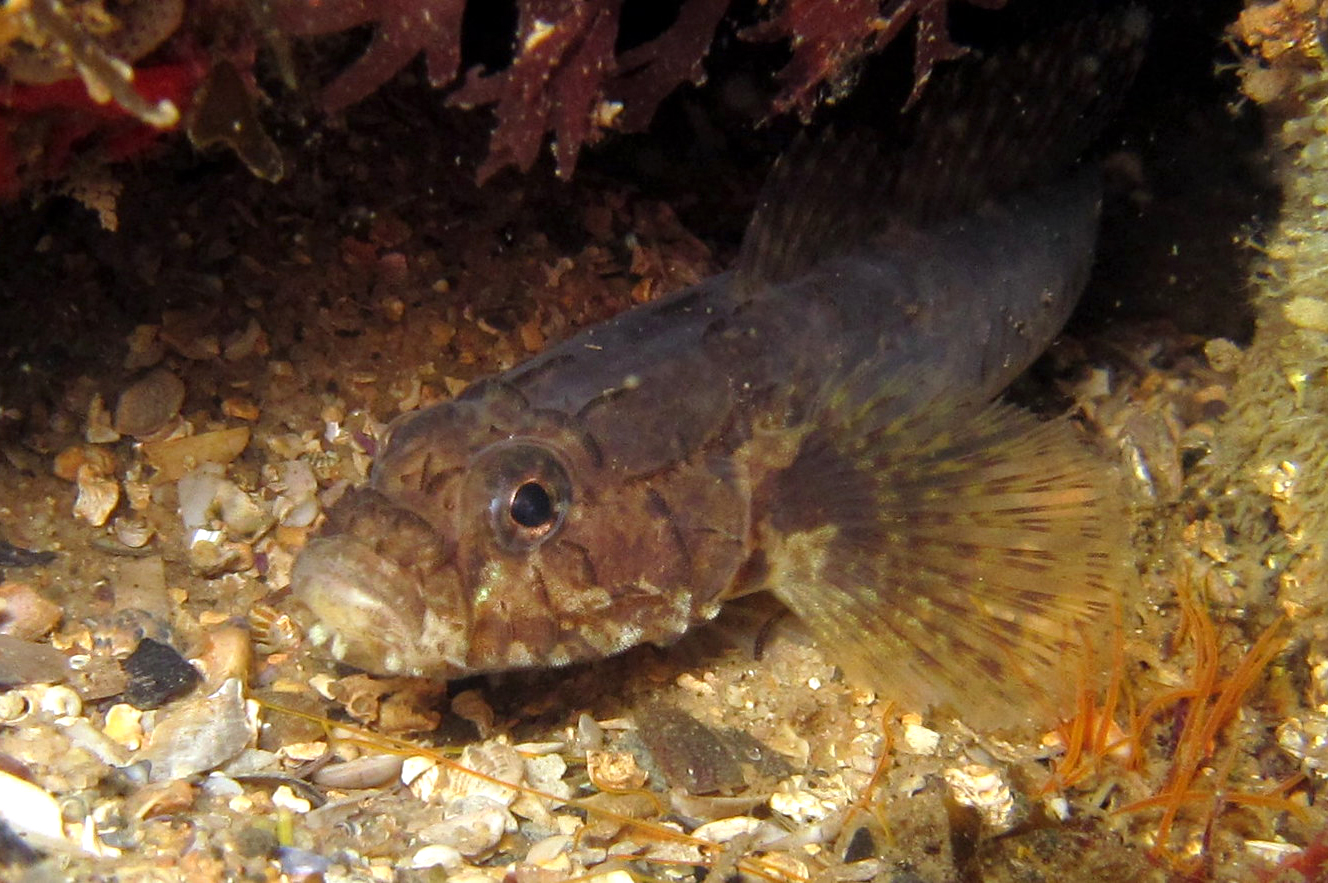Sculptured Goby, Callogobius mucosus (Günther 1872)

A Sculptured Goby, Callogobius mucosus, at the Williamstown Rotunda, Hobsons Bay, Port Phillip, Victoria, April 2011. Source: Sarah Speight / Flickr. License: CC by Attribution-NonCommercial-ShareAlike
Overall dark brown, with a reticulated pattern of pale spots surrounded by brown lines and several broad saddles or bands across top of body; a pale stripe from eye to rear of jaws.
The Sculptured Goby has several prominent raised papillae flaps on the head, giving the head a sculptured appearance. The transverse papillae flap behind each eye is long, its length about twice the distance between the flaps.
Sculptured Goby, Callogobius mucosus (Günther 1872)
More Info
|
Distribution |
Endemic to temperate waters of southern Australia from about Port Stephens, New South Wales, to the Houtman Abrolhos, Western Australia, including around Tasmania. Inhabits soft bottoms areas, often sheltering under rocks during the day near sheltered coastal reefs, in depths to 30 m. |
|
Features |
Dorsal fin VI, I, 10-12; Anal fin I, 8-9; Caudal fin (segmented rays) 17; Pectoral fin 15-18; Pelvic fin I, 5. Body slender, head depressed with several distinctive raised skin flaps giving a sculptured appearance; eyes close together; mouth small, jaws ending in front of eye. |
|
Size |
To 11 cm. |
|
Colour |
Overall dark brown, with a reticulated pattern of pale spots surrounded by brown lines and several broad saddles or bands across top of body; a pale stripe from eye to rear of jaws. |
|
Similar Species |
The similar Flathead Goby, Callogobius depressus, differs from the Sculptured Goby in having a short transverse paillae flap behind each eye, its length about equal to the distance between the flaps (vs. a long transverse papillae flap behind each eye, its length about twice the distance between the flaps), scales absent from the operculum (vs. each operculum with a few embedded scales dorsally), and the area before the pelvic fins with few or no scales (vs. the area before the pelvic fins heavily scaled). |
|
Etymology |
The specific name is from the Latin mucosus (= slimy, covered in mucus) in reference to the “thick mucous covering, which envelopes all parts and forms on the snout and sides of the head.” |
|
Species Citation |
Gobius mucosus Günther 1872, Proc. Zool. Soc. Lond. 1871(3): 663, pl. 63(A). Type locality: Adelaide, South Australia. |
|
Author |
Bray, D.J. 2020 |
|
Resources |







